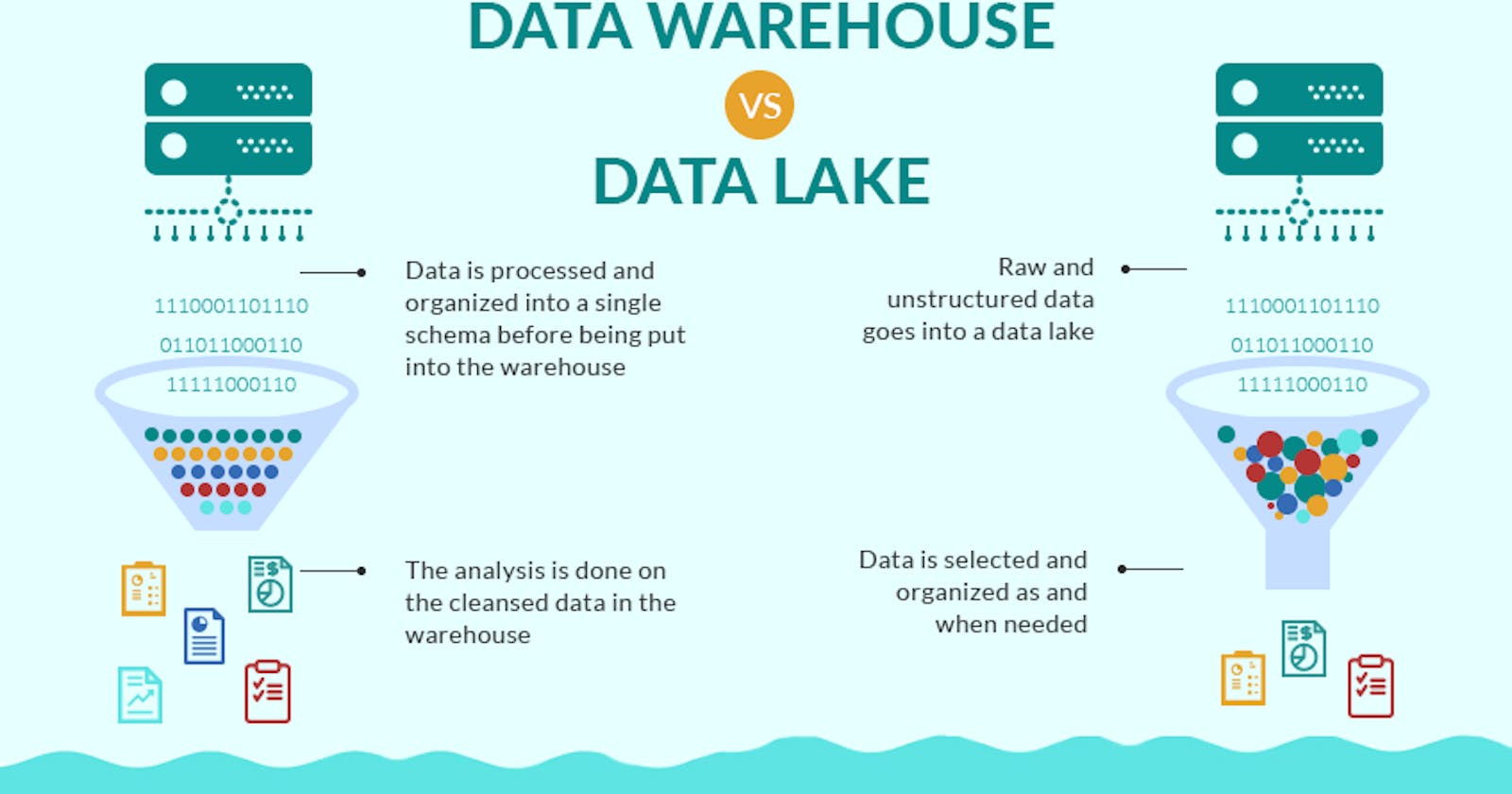Table of contents
Introduction:
In the world of data-driven decision-making, organizations rely on efficient data management and analytics to derive insights. Data lakes and data warehouses are two essential components of modern data architecture. While data lakes store vast amounts of raw and unstructured data, data warehouses are designed for structured data that is optimized for querying and analysis. In this blog post, we will explore how data flows from a data lake to a data warehouse in a structured format, enabling effective analytics and reporting.
Understanding Data Lakes and Data Warehouses:
A data lake is a centralized repository that stores large volumes of raw and unprocessed data in its native format. It provides a cost-effective solution for storing diverse data types, including structured, semi-structured, and unstructured data. The data lake's primary goal is to capture and store data in its original form without imposing a specific structure or schema.
On the other hand, a data warehouse is a structured and optimized repository designed for querying and analyzing data. It integrates data from various sources, applies schema design, and organizes the data into tables with defined relationships. The data warehouse is optimized for high-performance analytics, reporting, and business intelligence activities.
Data Flow from Data Lake to Data Warehouse:
To enable effective analytics, the data flow from a data lake to a data warehouse typically involves several stages:
Data Ingestion: Raw data from various sources, such as transactional databases, external APIs, and streaming platforms, is ingested into the data lake. The data is stored in its native format, preserving its original structure.
Data Extraction and Transformation: The data in the data lake is extracted and transformed into a structured format suitable for analysis. This step involves data cleaning, normalization, aggregation, and applying business rules to ensure data consistency and accuracy.
Data Schema Design: The transformed data is mapped to a predefined schema that defines the structure and relationships of the data warehouse. This schema design includes defining tables, columns, primary keys, foreign keys, and other constraints.
Data Loading: The structured data is loaded into the data warehouse using various techniques such as batch loading, incremental loading, or real-time streaming. This step ensures that the data warehouse is continuously updated with the latest information.
Data Quality Assurance: Data quality checks and validations are performed to ensure the accuracy, completeness, and consistency of the data. This step involves identifying and resolving any data quality issues or anomalies before making the data available for analysis.
Benefits of Structured Data in Data Warehouses:
The transformation of data from a data lake to a structured format in a data warehouse offers several benefits:
Improved Performance: Structured data allows for optimized querying and analysis. Data warehouses are designed with indexing, partitioning, and optimized storage formats that enable faster data retrieval and analytics processing.
Simplified Data Exploration: With a predefined schema and structured data, analysts can easily explore and navigate the data using SQL or business intelligence tools. The structured format provides a clear understanding of data relationships and facilitates complex data aggregations and calculations.
Enhanced Data Integration: By transforming data into a structured format, data from multiple sources can be integrated seamlessly. The structured schema enables easy data joins, merges, and blending, leading to a comprehensive view of the organization's data.
Consistent Data Governance: Data warehouses enforce data governance practices by defining data standards, access controls, and data security measures. The structured format ensures that data adheres to predefined rules and validation checks.
Conclusion: The transition of data from a data lake to a data warehouse in a structured format is a crucial step in the data management lifecycle for the data to be represented in a structured format for the Data Analyst & Data scientist to analyze the data for business growth by sharing the data insights.
